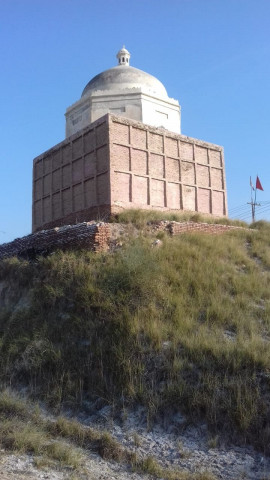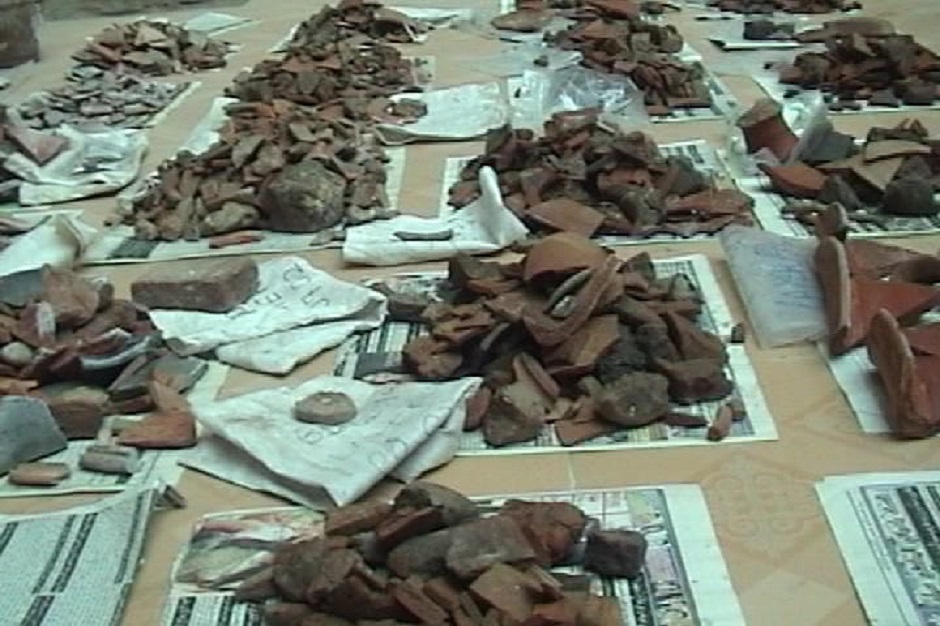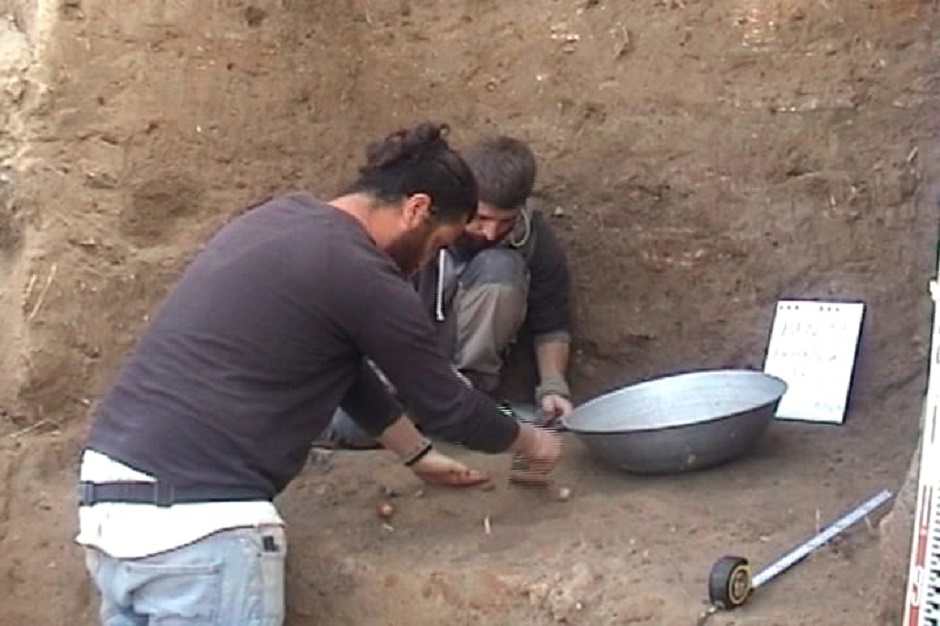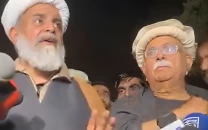The hero’s tomb that kept a millennia-old secret
Bhando Jo Qubo was famous for housing remains of Ratodero’s founder

17th-century tomb known by locals as Bhando Jo Qubo. PHOTO: EXPRESS
For any other tomb on any other mound, this story would be enough. But a serendipitous accident more than two decades ago uncovered a trove of artefacts and remains far more ancient, revealing there was much more than met the eye to the mound that houses the local hero’s final abode.
Older than the Indus Valley
According to archaeologists, the remains uncovered at the Bhando Jo Qubo mound suggest the site is far older than the Indus Valley Civilisation period.
“The artefacts and remains we have excavated bear strong resemblance to the Kot Diji culture, which both local and international archaeologists believe predates the Indus Valley Civilisation and is possibly, the oldest culture of the Indus region,” Shah Latif University Archaeology Department Chairman Dr Ghulam Muhiuddin Veesar told The Express Tribune.
He explained that the Kot Diji culture, which is dated to around 2800 BC, evolved into the Indus Valley Civilisation by 2500 BC after developing a complex socio-political system, a culture of planned towns and written language, the most notable evidence of which is found at Mohenjo Daro.
 PHOTO: EXPRESS
PHOTO: EXPRESSThe Kot Diji culture is named after the ancient site bearing its namesake which was excavated in the 1950s. Located some 24 kilometres south of Khairpur, the site was uncovered at the foot of the Rohri Hills which house the 1790 Kot Diji Fort.
The ‘lucky’ accident
According to Dr Veesar, who was part of the team that discovered the Bhando Jo Qubo remains, archaeologists learnt of the site in 1998, when the Indus Highway linking Sindh to the rest of the country was being constructed.
“We came to know about the mound from highway officials. While building the highway, construction workers destroyed roughly half of the almost 400-metre wide mound in order to lay a road through it,” he told The Express Tribune.
Ancient inscriptions in rock art of Sindh
Dr Veesar said he and his team visited Bhando Jo Qubo soon after and set up a dig site. “We started excavation and found objects that appeared similar to Kot Diji culture artefacts found elsewhere. Some of the artefacts uncovered at Bhando Jo Qubo also had designs and illustrations similar to pottery shards and other items discovered at Mohenjo Daro,” he added.
Artefacts found during excavation at the site include pottery shards, animal bones, stone weights and charcoal. Archaeologists also uncovered the remains of hearths or fireplaces.
International interest
Talking about the latest on Bhando Jo Qubo research, Dr Veesar said that an article about the site published in an international journal prompted archaeologists and researchers from all over the world to approach Khairpur University regarding research.
“Excavation at the site restarted after 21 years a few days ago as well with the help of five archaeologists from the University of Barcelona and Tokyo’s Meiji University,” he added. The team that carried out the recent excavation comprised Dr Veesar himself and local archaeologist Dr Qasid Mallah along with Professor Marco Madella, Dr Carla Lancelotti, Abel Ruiz and Oscar Parque from the University of Barcelona and Meiji University’s Takehiro Miki.
 PHOTO: EXPRESS
PHOTO: EXPRESS“We have now dug down to a depth of four metres at the site, and have carried out environmental, typological and other studies,” Dr Mallah told The Express Tribune while providing details of the recent excavation. “The plan now is to send samples of the bones and charcoal we have excavated to Spain for radiocarbon dating so that we can determine the age of this site with absolute certainty,” he added.
Talking about the potential of the Indus region for historical research, Dr Mallah said “Mohenjo Daro may have been the main city of the Indus Valley Civilisation but it cannot have been the only one.”
“There must be more Indus Valley settlements out there waiting to be discovered,” he added.
On the ‘recent’ history of Bhando Jo Qubo
Coming back to the Bhando Jo Qubo tomb, it is believed that it was built in the 17th century by rulers from the Kalhora dynasty to house the remains of Rato Khan Jalbani. Although a definitive account of the founder of Ratodero is far from settled, local historians believe he met his end while leading his people against a band of Pathan marauders from the west.
“Rato Khan died while fighting the invaders, who decapitated him and took his severed head leaving the rest of his body behind,” local journalist Aijaz Kumbher told The Express Tribune while recounting what local historians believe about the legendary figure’s fate.
He said Bhando Jo Qubo gets his name from Rato Khan’s headless remains. “Bhando is the Sindhi word for torso, so the name means ‘the Tomb of the Torso’,” Kumbher added.
While facts in history are always open for debate, if accounts of Rato Khan’s valour are to be believed, it may appear in death the local hero defended another secret from prying eyes.



















COMMENTS
Comments are moderated and generally will be posted if they are on-topic and not abusive.
For more information, please see our Comments FAQ